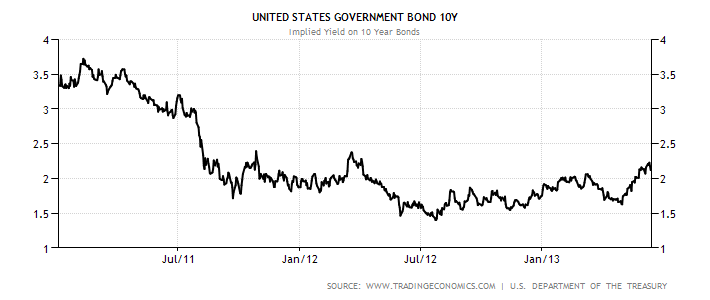The words of the US Federal Reserve and its chairman, Ben Bernanke dominate the week ahead for markets here and offshore.
Nothing will matter for markets until the Fed’s Open Market’s Committee issues its end of meeting statement in the early hours of Thursday morning, along with updated forecasts for the US economy for the next 18 months to two years.
Then Mr Bernanke holds a press conference where his every word will be scrutinised until it falls apart, such is the current level of focus on what he says from the markets.
That’s because when the Fed chairman last appeared in public on May 22 he used a form of words which suggested the Fed would start cutting its spending sooner than later, throwing markets around the world – but especially in emerging and commodity markets (Australia, Brazil etc, the UK) into confusion.
That confusion then developed into the big bear sell-off we have seen since then, especially in Japan, Singapore, Brazil, Australia, Indonesia, Thailand, China, Hong Kong, South Africa and other emerging markets.
In comments to the US Congress on May 22, Mr Bernanke said the Fed could cut back on its monetary stimulus if the labor market shows “sustainable improvement”.
But it has to be emphasised that the markets are very illogical at the moment because what is happening in the US is good news – the economy is recovering slowly, normality is returning and that will mean higher interest rates, eventually.
But the lure of cheap money from the Fed and the Bank of Japan has kept the market speculators, hedge funds and the like alive and they don’t like it being taken away. But it will. So they are selling out of their easily financed deals in emerging and commodity markets because that’s where the biggest gains were to be made.
And Australia is part of that world, which is why our gains for 2013 have been wiped out.
Improving conditions and normality in the US will mean more volatility and all Mr Bernanke did on May 22 was to give markets a reminder of that – and the easy money mob didn’t like it.
But this also means the Fed can stuff things up if it mismanages the return from emergency low cost funding (since late 2008) to normality.
The good US jobs data for May 10 days ago added to the feeling that the speeding could slow sooner rather than later, so markets sold off in a panic, especially in Japan.
Now everything hinges on what is said early Thursday morning, our time.
In fact economists say the Fed is unlikely to tip its hand about when it may begin to scale back its bond-buying program, but the Fed may be inclined to try to dampen the recent volatility in financial markets with some mention of the issue.
What it will probably make clear is that the pace of Quantitative Easing (QE) can be increased or decreased in the future depending on how the economy is performing and that any decision to slow QE does not mean that interest rate hikes are any closer.
The real indicator – US 10 year bond yields returning to normal

The AMP’s Dr Shane Oliver says, "This could be supportive of both shares (because QE will only be reduced if the economy is stronger which is good for profits) and bonds (as interest rate hikes are no closer.)
"We are looking for a tapering (in the quantitative easing) around September, and this is becoming the consensus so by the time it happens it will hardly be a surprise."
The focus on the Fed will mean that some important months economic data probably will get overshadowed a little this week. The data includes a national home builders confidence and activity index, housing starts for May (out Tuesday) and existing home sales (on Thursday).
June manufacturing conditions indexes for the New York (tonight, our time) and Philadelphia (on Thursday) regions and the Markit flash Performance of Manufacturing Index (also on Thursday) are likely to show manufacturing conditions hanging around levels seen in May.
The May US CPI (tomorrow) is likely to remain benign after weak oil and petrol prices last month and a mild set of producer price indexes released on Friday night. Much of this data, especially the housing confidence, starts and sales, will be very solid and will add to the belief that the Fed will start cutting its spending sooner than later.
But it will be up to Mr Bernanke to provide the proper context for that decision.
In Australia, the minutes from the RBA’s last board meeting are out tomorrow and will confirm that it retains an easing bias.
In a quiet week for data updates, figures for car sales (today) and skilled vacancies (Wednesday) are also likely to be released with the latter likely to remain weak.
But the biggest influence on Australian markets, apart from the Fed meeting and statements, will be the HSBC flash manufacturing conditions PMI for China which will also be released Thursday. The last one for April, issued a month ago, showed an unexpected dip into contraction, as did the final release at the start of June.
A worsening in the early estimate, no matter how small, will add to the nervousness local investors have about China’s current economic health.
Speeches from both Telstra chief executive David Thodey and Woolworths boss Grant O’Brien will be closely watched.
The former for any update on the asbestos controversy, the latter for any more on reports the retailer is looking to resume manufacturing some food lines because local companies can’t make what it wants.
The New South Wales government will unveil its state budget for 2013-14 tomorrow.
In Europe, Markit’s flash business conditions PMI’s for June will be released on Thursday and are expected to show a continuing but gradually improving trend.













